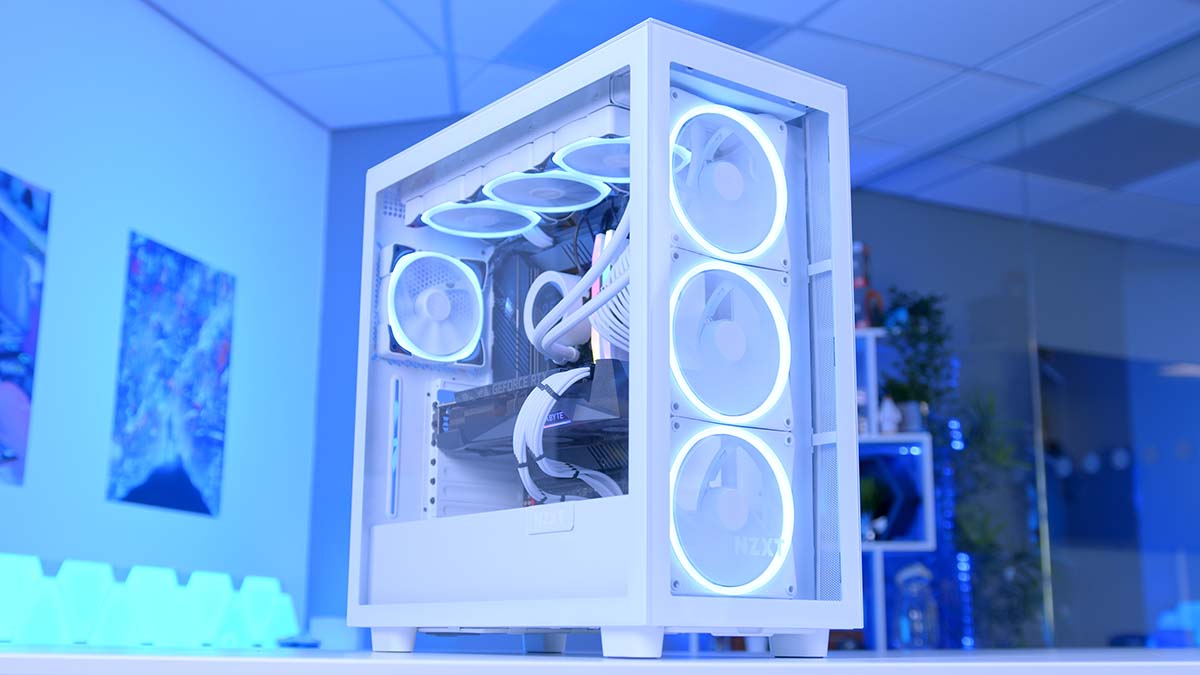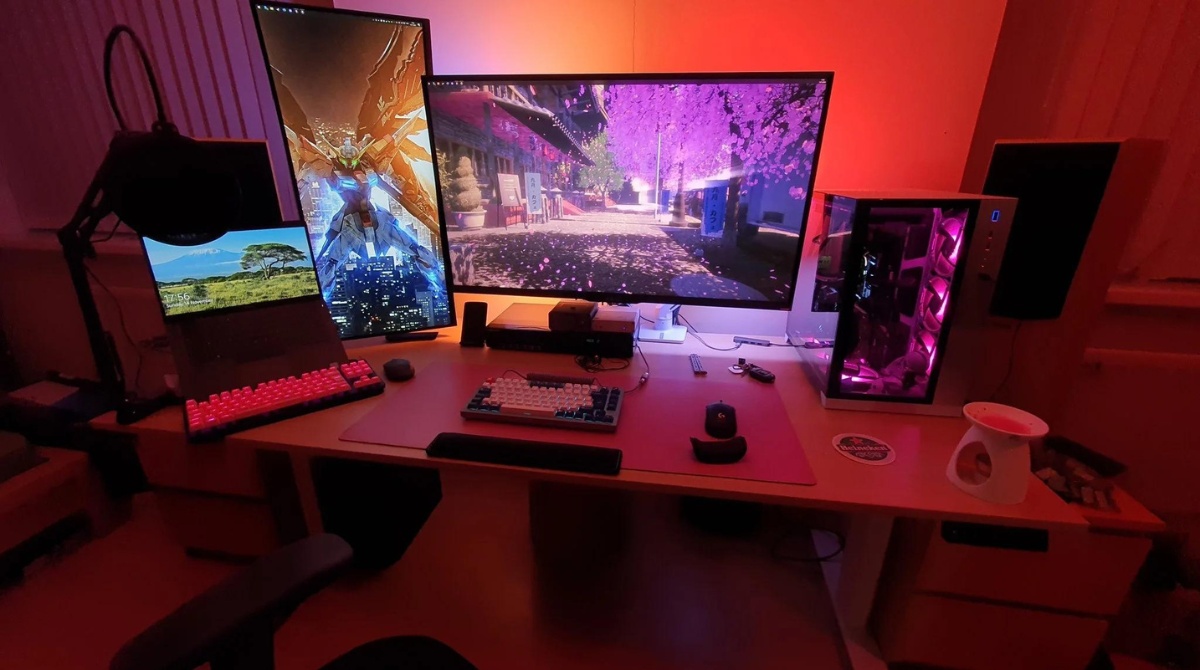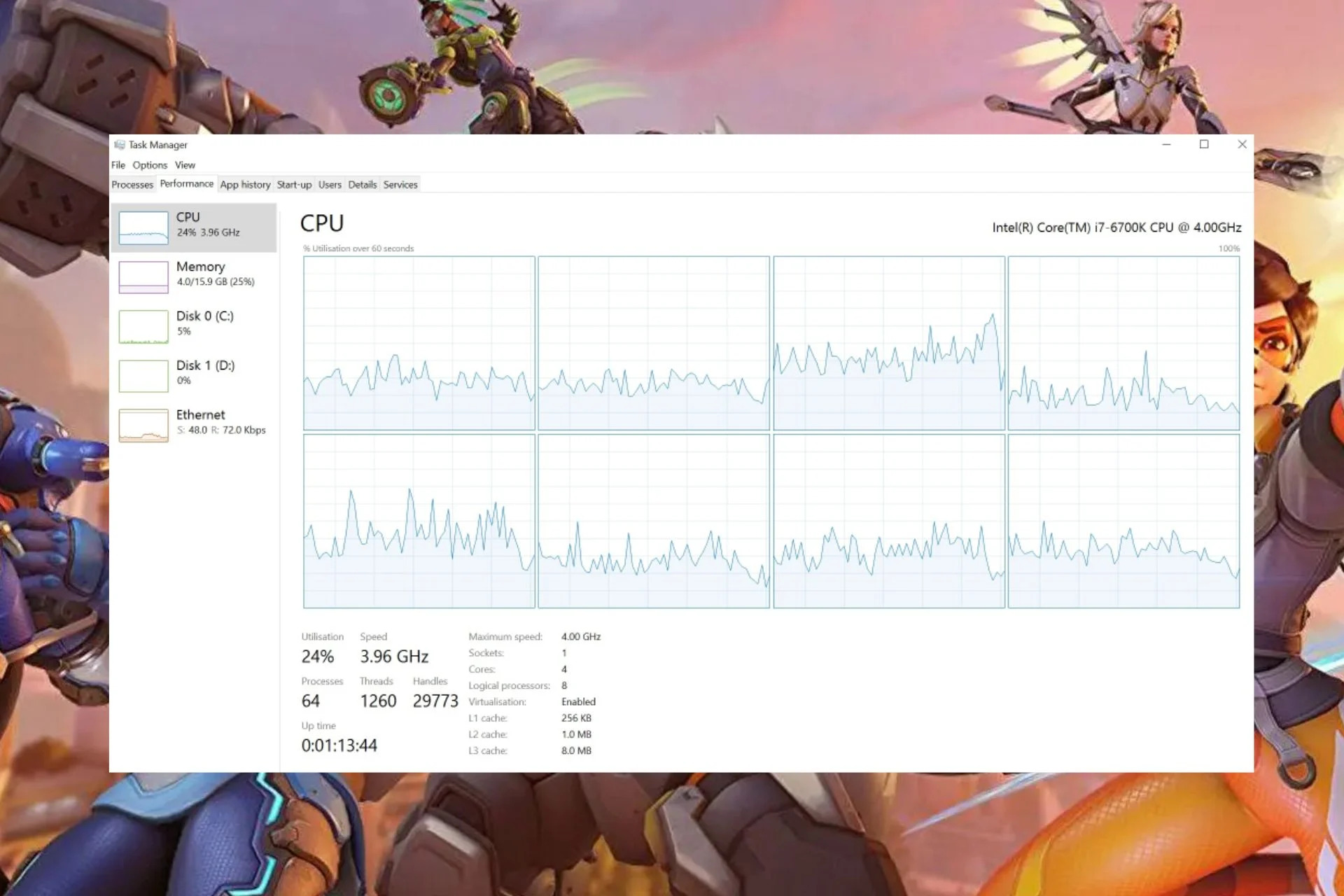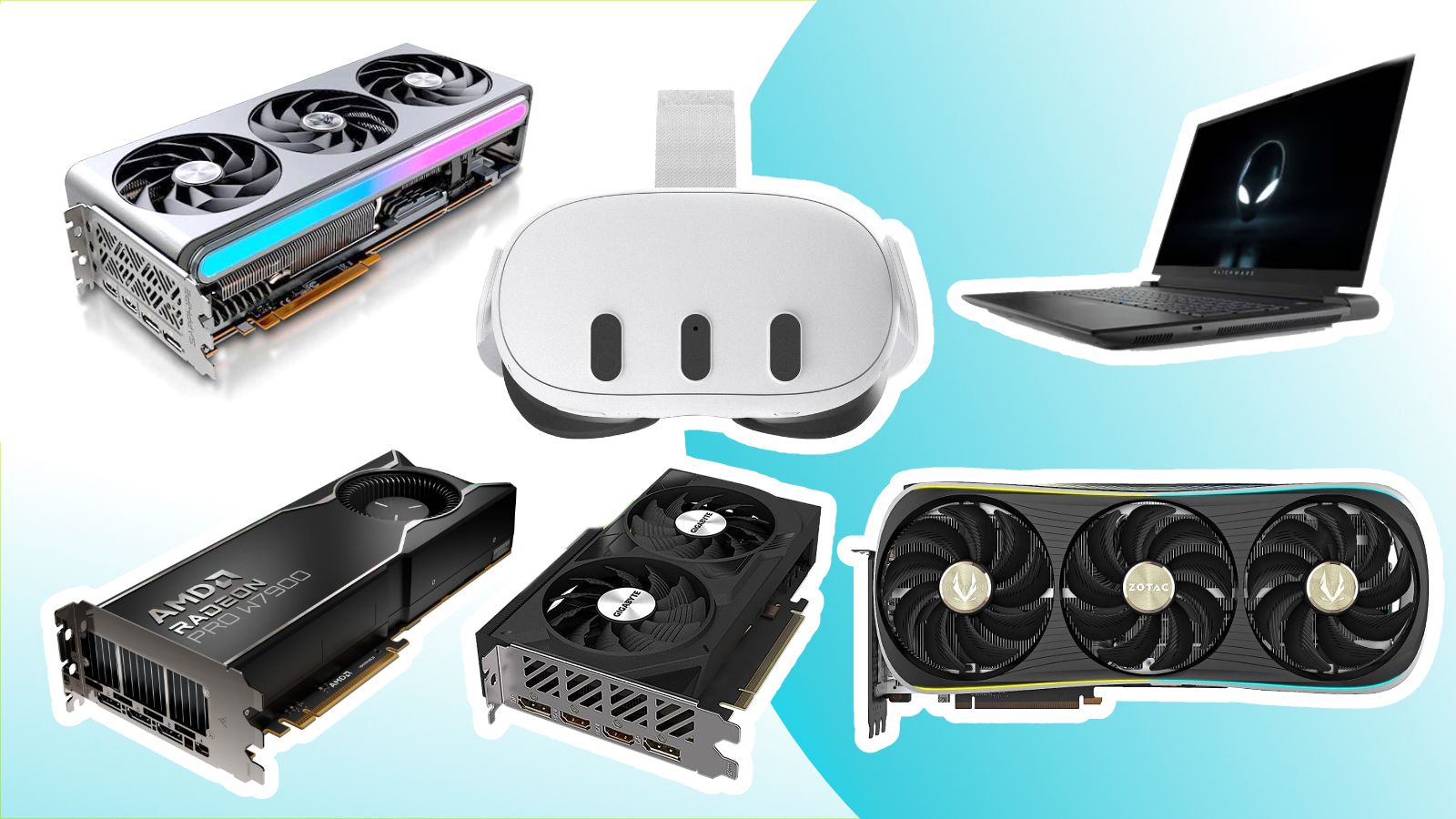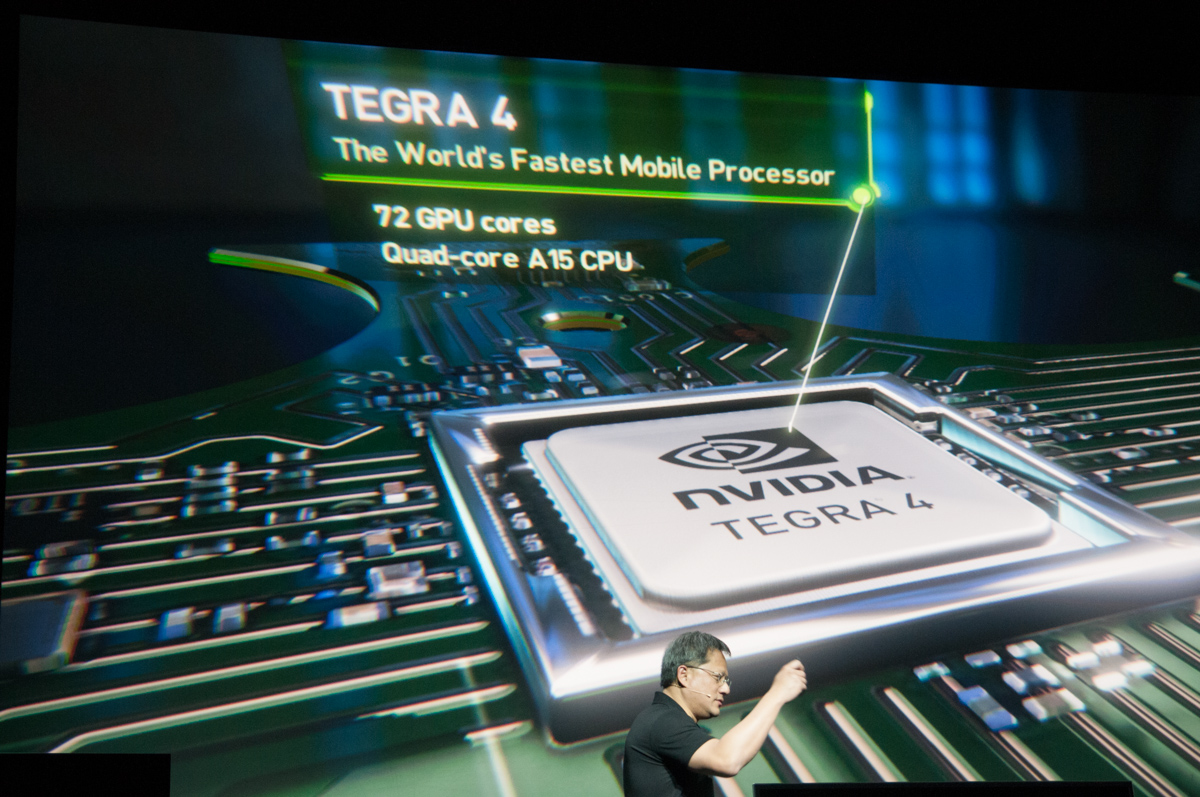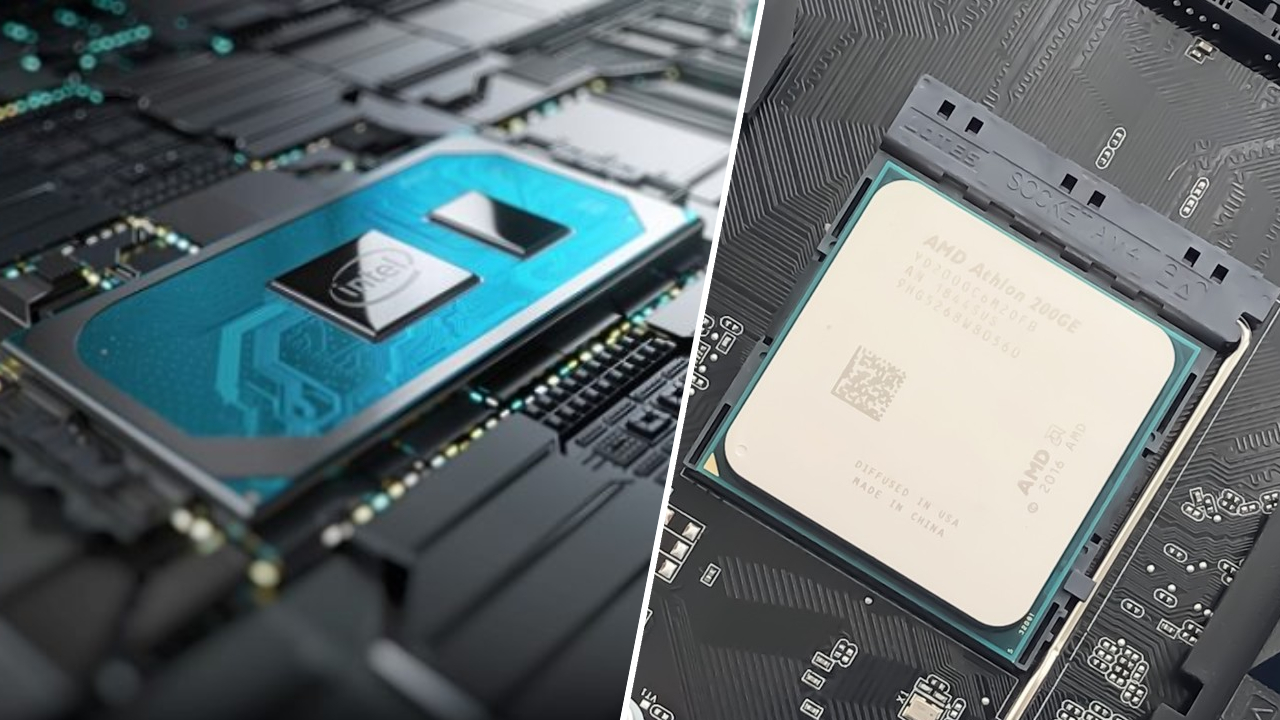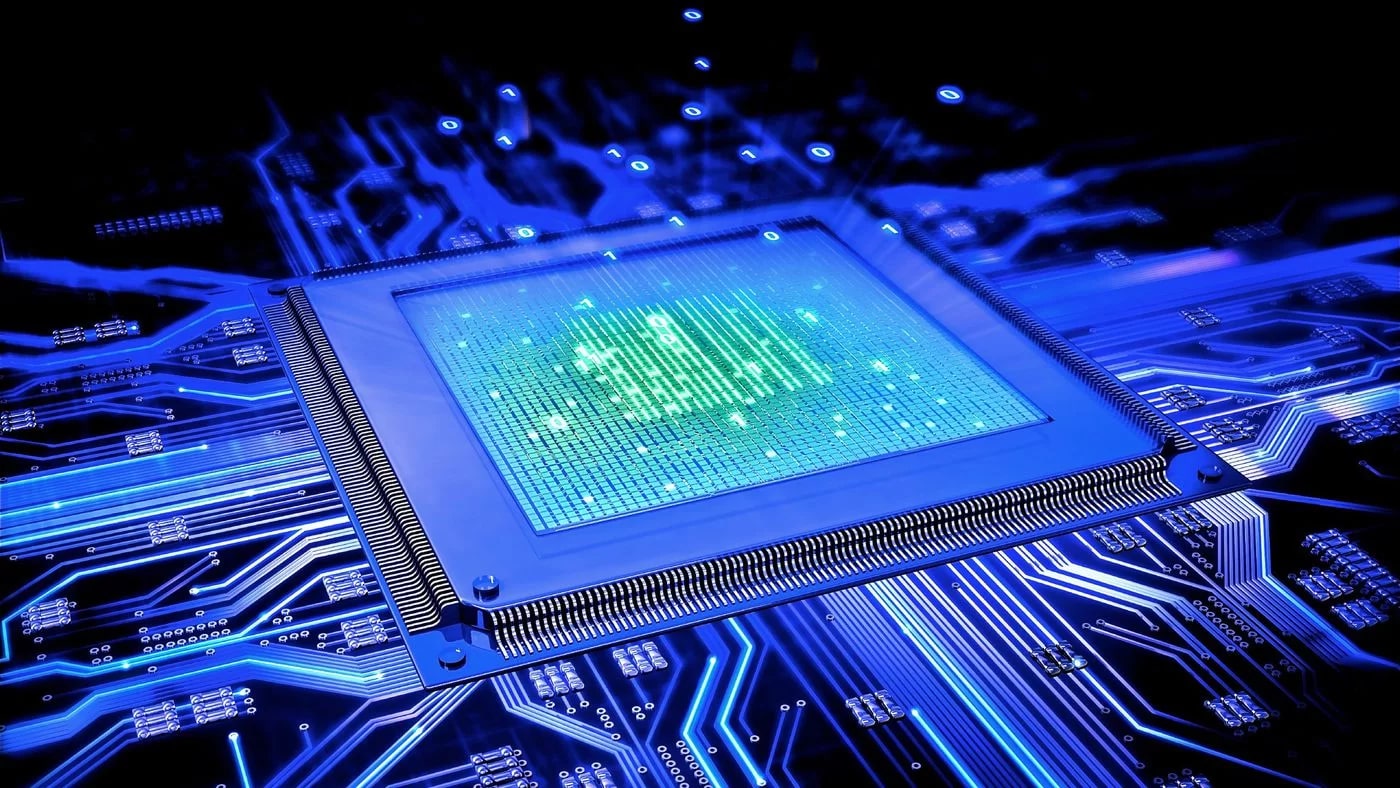Introduction
Welcome to the world of gaming! Whether you’re a seasoned gamer or just starting out, one of the key elements that can greatly impact your gaming experience is your graphics card. A graphics card is responsible for rendering all the visuals on your screen, from stunning landscapes to detailed character models.
But how do you know if your graphics card is capable of running the latest games? Fear not, because in this article, we will explore the different aspects of your graphics card and how it can affect gaming performance. By understanding the capabilities of your graphics card, you’ll be able to make informed decisions when it comes to selecting and playing games.
Before we dive into the nitty-gritty details, it’s important to get familiar with the terminology. You may have come across terms like VRAM, clock speed, and GPU. These terms refer to various aspects of your graphics card that determine its performance level. VRAM, or Video Random Access Memory, is the dedicated memory on your graphics card that stores and processes important graphical data. Clock speed refers to the speed at which your graphics card’s GPU, or Graphics Processing Unit, operates. These factors, along with the number of cores and architecture, determine the overall performance of your graphics card.
Now let’s talk about system requirements. When you look at the specifications of a game, you’ll usually see two sets of requirements: minimum and recommended. The minimum requirements indicate the lowest specifications your system needs to meet in order to run the game, while the recommended requirements indicate the ideal specifications for smoother gameplay.
However, it’s worth noting that system requirements are not solely based on the capabilities of your graphics card. Other components, such as your CPU, RAM, and storage, also play a role in determining your system’s overall performance. It’s important to have a well-balanced system to ensure optimal gaming performance.
In the next sections, we’ll explore how you can check the performance of your graphics card, the resource requirements of popular games, and benchmarks for different levels of graphics cards. By the end of this article, you’ll have a better understanding of what games your graphics card can handle and how to future-proof your gaming setup. So, let’s dive in and explore the exciting world of gaming with your graphics card!
Understanding Your Graphics Card
Before we delve into the world of gaming performance and system requirements, it’s essential to have a basic understanding of how your graphics card works. Your graphics card, also known as a GPU (Graphics Processing Unit), is a crucial component responsible for rendering and displaying images, animations, and videos on your monitor.
One of the primary factors that determine the performance of your graphics card is its architecture. The architecture of a graphics card refers to the design and layout of its internal components and circuitry. Different architectures offer varying levels of performance and efficiency. Some popular architecture designs include NVIDIA’s GeForce architecture and AMD’s Radeon architecture.
Another crucial aspect of your graphics card is its VRAM (Video Random Access Memory). VRAM is the dedicated memory that stores and processes the graphical data required for rendering images on your screen. The amount of VRAM available on your graphics card can significantly impact its performance, especially when running graphics-intensive games or applications. Higher VRAM capacity allows for smoother rendering of complex textures and graphics.
Next, let’s discuss clock speed. The clock speed of a graphics card refers to the speed at which its GPU operates. It is measured in megahertz (MHz) or gigahertz (GHz). A higher clock speed translates to faster processing and better performance. However, it’s important to note that clock speed is not the sole indicator of a graphics card’s performance. Other factors, such as the number of cores and the efficiency of the architecture, also come into play.
A significant aspect to consider when choosing a graphics card is its power consumption and thermal design. High-end graphics cards often require additional power connectors and adequate cooling solutions, such as fans or heat sinks, to prevent overheating. It’s crucial to ensure that your power supply can handle the power requirements of your graphics card and that your system has proper cooling to maintain optimal performance.
Lastly, compatibility with your system is another crucial factor to consider when selecting a graphics card. Your graphics card should be compatible with your motherboard’s expansion slot. Most modern graphics cards use the PCI Express (PCIe) interface. Checking the available PCIe slots on your motherboard and the size limitations of your computer case will help determine the right graphics card for your system.
Now that you have a better understanding of the important elements of your graphics card, including architecture, VRAM, clock speed, power consumption, and compatibility, you are ready to assess its performance capabilities. In the next sections, we will explore how to check your graphics card’s performance, as well as the minimum and recommended system requirements for popular games.
Minimum and Recommended System Requirements
When you’re considering playing a new game, it’s crucial to check the system requirements to ensure that your computer can handle it. System requirements consist of two sets: minimum and recommended. The minimum requirements indicate the bare minimum specifications your system needs to meet to run the game, while the recommended requirements indicate the ideal specifications for optimal performance.
The minimum system requirements are the baseline specifications needed to launch the game. Meeting the minimum requirements may allow the game to run, but you may experience lower graphics settings, reduced frame rates, or occasional lag. It’s always better to aim for the recommended requirements to enjoy the game at its fullest potential.
System requirements typically include specifications for the CPU, RAM, storage, and, most importantly for our discussion, the graphics card. The graphics card requirements usually specify the minimum level of performance or the specific model required. This information is crucial as it helps determine if your current graphics card can handle the game or if an upgrade is necessary.
Keep in mind that system requirements can vary from game to game, depending on its complexity and graphical demands. Newer and graphically intensive games require more powerful hardware, including the graphics card, to deliver smooth gameplay and visually stunning graphics.
It’s essential to check the system requirements provided by the game developer or publisher. These requirements can usually be found on the game’s official website or on platforms like Steam or GOG. If you’re unsure about specific technical terms or how your hardware matches up, a quick internet search will often provide you with valuable resources and discussions on gaming forums.
By comparing the listed system requirements with the specifications of your own computer, you can determine if your graphics card meets or exceeds the minimum or recommended requirements. If your graphics card falls short, you might need to consider upgrading to a more powerful model to enjoy the game without compromising performance.
Now that we’ve covered the importance of minimum and recommended system requirements in relation to graphics cards, let’s move on to the next section to learn how to check the performance of your graphics card.
Checking your Graphics Card Performance
Knowing the performance capabilities of your graphics card is crucial when it comes to gaming. Fortunately, there are various tools and methods available to check and evaluate the performance of your graphics card.
One popular tool for checking graphics card performance is the benchmarking software. Benchmarking allows you to run performance tests that stress your graphics card and provide valuable insights into its capabilities. There are several benchmarking tools available, such as 3DMark, Unigine Heaven, and FurMark. These tools measure parameters like frame rates, GPU temperature, and VRAM usage during intensive graphic simulations.
Benchmarking your graphics card can provide a baseline understanding of its performance in comparison to other models or as a reference point for future performance evaluations. It can help you determine if your card is performing optimally or if it’s time for an upgrade.
Another way to assess your graphics card’s performance is by looking at the specific game requirements and recommendations. Game developers often mention the ideal graphics card models along with their performance level, such as high, medium, or low. This information can give you a rough idea of how well your graphics card might handle the game.
In addition to benchmarking software and game recommendations, you can also rely on user reviews and online forums to gather real-world insights about your graphics card’s performance in specific games. Many enthusiastic gamers share their experiences and performance benchmarks online, which can help you gauge how well your graphics card fares with different games.
For a quick and easy assessment of your graphics card’s performance, task manager utilities provided by both Windows and macOS can give you an overview of the GPU utilization and current clock speed. These tools are useful for monitoring the real-time performance of your graphics card while playing games or running graphic-intensive applications.
Keep in mind that graphics card performance can also be influenced by other factors, such as CPU performance, RAM capacity, and system cooling. It’s essential to have a well-balanced and optimized system to achieve the best gaming performance.
Now that you have an understanding of how to check the performance of your graphics card, as well as the importance of minimum and recommended system requirements, let’s explore the resource requirements of popular games in the next section.
Popular Games and their Resource Requirements
As a gamer, you’re likely interested in playing popular and widely acclaimed games. Different games have varying resource requirements, including those related to the graphics card. Let’s take a look at some well-known games and their resource demands to give you an idea of what your graphics card needs to run them smoothly.
One of the most popular games in recent times is “Fortnite.” This multiplayer online battle royale game has gained a massive following. The minimum graphics card requirement for “Fortnite” is typically an NVIDIA GeForce GTX 660 or an AMD Radeon HD 7870, or equivalent. However, to fully enjoy the game, it’s recommended to have a graphics card like the NVIDIA GeForce GTX 1060 or a comparable AMD Radeon model.
An incredibly immersive role-playing game, “The Witcher 3: Wild Hunt,” demands a bit more from your graphics card. The minimum requirement for this visually stunning game is an NVIDIA GeForce GTX 770 or an AMD Radeon R9 290. For a smoother experience, a more powerful graphics card like the NVIDIA GeForce GTX 970 or an equivalent AMD Radeon model is suggested.
If you’re a fan of first-person shooter games, “Call of Duty: Warzone” is a popular choice. The minimum requirement for this game is an NVIDIA GeForce GTX 670 or an AMD Radeon HD 7850. For a better gaming experience, however, it’s recommended to have a graphics card like the NVIDIA GeForce GTX 970 or an AMD Radeon R9 390.
For those who enjoy racing games, “Forza Horizon 4” is highly regarded. To run this visually stunning game, the minimum graphics card requirement is an NVIDIA GeForce GTX 970 or an AMD Radeon R9 290X. To experience the game at its best, a graphics card like the NVIDIA GeForce GTX 1080 or an equivalent AMD Radeon model is recommended.
It’s important to note that these are just a few examples, and the requirements can vary between game releases and updates. Always check the specific game requirements provided by the developers to ensure compatibility with your graphics card.
Remember, as newer and more graphically demanding games continue to be released, the resource requirements are likely to increase. It’s a good idea to keep an eye on the specifications of upcoming games to ensure your graphics card is up to the task.
Now that we’ve explored the resource requirements of popular games, let’s move on to the next section where we’ll discuss gaming benchmarks for different levels of graphics cards.
Gaming Benchmarks for Entry-Level Graphics Cards
If you have an entry-level graphics card, you may wonder how it performs in gaming scenarios. Benchmarks provide valuable insights into the performance of your graphics card and can help you gauge its capabilities for running various games. Let’s take a look at some gaming benchmarks for entry-level graphics cards.
One popular entry-level graphics card is the NVIDIA GeForce GTX 1050. This card offers a good balance between performance and affordability. In benchmarks, the GTX 1050 consistently delivers smooth gameplay in less demanding games like “Counter-Strike: Global Offensive” and “Rocket League.” It can also handle graphically demanding games like “DOOM” and “Overwatch” at lower graphics settings with respectable frame rates.
The AMD Radeon RX 560 is another entry-level graphics card that delivers decent gaming performance. Benchmarks show that it can handle games like “Fortnite,” “League of Legends,” and “Apex Legends” at playable frame rates on medium to high settings. However, for more demanding AAA titles, you may need to lower the graphics settings to maintain smooth performance.
If you have an even more budget-friendly graphics card, such as the NVIDIA GeForce GT 1030 or the AMD Radeon RX 550, you can still enjoy gaming, albeit with some limitations. These cards are suitable for light and less graphically demanding games like “Minecraft” or older titles such as “World of Warcraft.” They may struggle with newer and more demanding games, requiring lower graphics settings and resolution to maintain playable frame rates.
It’s important to understand that entry-level graphics cards may not deliver the same level of performance as their higher-end counterparts. However, with some tweaking of graphics settings and resolution, you can still enjoy a satisfactory gaming experience on a budget.
Keep in mind that gaming benchmarks can vary depending on factors such as CPU, RAM, and system optimization. It’s crucial to consider the overall balance of your system when evaluating gaming performance.
Now that we’ve explored gaming benchmarks for entry-level graphics cards, let’s move on to discuss benchmarks for mid-range graphics cards in the next section.
Gaming Benchmarks for Mid-Range Graphics Cards
If you’re looking for a good balance between performance and affordability, mid-range graphics cards offer a sweet spot for gaming. These cards provide the capability to run modern games at respectable frame rates and graphical settings. Let’s delve into some gaming benchmarks for mid-range graphics cards to give you an idea of their performance.
The NVIDIA GeForce GTX 1660 Super is a popular mid-range graphics card known for its excellent price-to-performance ratio. In benchmarks, this card performs admirably in a wide range of games. It can comfortably handle graphically demanding AAA titles like “Shadow of the Tomb Raider” and “Assassin’s Creed Odyssey” at high settings and 1080p resolution, delivering smooth gameplay with solid frame rates.
The AMD Radeon RX 5600 XT is another mid-range graphics card that offers solid gaming performance. Benchmarks show that it can handle modern games like “Control” and “Borderlands 3” at high settings and 1080p resolution with good frame rates. It also performs well in esports titles such as “Valorant” and “Rainbow Six Siege,” delivering high frame rates for competitive gaming.
The mid-range segment also features the NVIDIA GeForce RTX 2060, which offers additional features like real-time ray tracing and DLSS (Deep Learning Super Sampling). In benchmarks, this card demonstrates impressive performance in graphically demanding games like “Metro Exodus” and “Cyberpunk 2077,” providing a smooth gaming experience even at high settings and 1440p resolution.
It’s important to note that your gaming experience may vary based on factors like the specific game, CPU, and system optimization. It’s recommended to check individual game benchmarks and user reviews to understand how your mid-range graphics card will perform in the games you intend to play.
Mid-range graphics cards are excellent choices for gamers who want a balance of performance and affordability. They provide a significant leap in performance compared to entry-level cards and can handle a wide range of games comfortably. With their capabilities, you can enjoy modern games at good graphical settings and smooth frame rates.
Now that we’ve explored gaming benchmarks for mid-range graphics cards, let’s move on to discuss benchmarks for high-end graphics cards in the next section.
Gaming Benchmarks for High-End Graphics Cards
If you’re a hardcore gamer looking for top-tier performance and the ability to play games at ultra-high settings, high-end graphics cards are the way to go. These powerful cards offer the best gaming performance and can handle the most demanding games with ease. Let’s explore some gaming benchmarks for high-end graphics cards to showcase their exceptional capabilities.
The NVIDIA GeForce RTX 3080 is one of the most powerful graphics cards available. In benchmarks, this beast of a card delivers incredible performance in a wide range of games. It can effortlessly handle graphically demanding titles like “Red Dead Redemption 2” and “Metro Exodus” at maximum settings and 4K resolution, delivering buttery-smooth gameplay with high frame rates.
Another high-end contender is the AMD Radeon RX 6900 XT. Benchmarks show that this graphics card offers exceptional gaming performance, allowing you to enjoy games like “Assassin’s Creed Valhalla” and “Doom Eternal” at 4K resolution with maximum graphical settings. It handles ray tracing and graphically intensive effects with ease, providing an immersive and visually stunning gaming experience.
For those who prioritize ray tracing and DLSS (Deep Learning Super Sampling), the NVIDIA GeForce RTX 3070 is an excellent choice. In benchmarks, this card performs admirably in games that utilize ray tracing technology, such as “Control” and “Minecraft with RTX.” It delivers stunning visuals with accurate lighting and reflections while maintaining solid frame rates at high resolutions.
High-end graphics cards provide a level of performance that is unmatched, allowing you to enjoy games at the highest graphical settings and resolutions available. However, it’s important to note that the performance gains may have diminishing returns as you move higher up in the price and performance hierarchy. It’s crucial to consider factors like your budget, preferred gaming resolution, and future-proofing when choosing a high-end graphics card.
Now that we’ve explored gaming benchmarks for high-end graphics cards, let’s move on to discuss how to future-proof your gaming setup in the next section.
Future-Proofing Your Gaming Setup
As technology evolves and game graphics become more demanding, it’s important to future-proof your gaming setup to ensure that it can handle upcoming games and advancements. Here are some tips to future-proof your gaming setup.
Investing in a high-end graphics card is a good start. High-end cards offer more power and advanced features like ray tracing and DLSS, which can enhance your gaming experience and ensure compatibility with future games. While high-end graphics cards may come with a hefty price tag, they tend to have a longer lifespan and can handle gaming demands for several years.
Consider the resolution and refresh rate of your monitor. Higher resolutions, such as 1440p or 4K, provide a more immersive gaming experience but also require more graphics processing power. Likewise, higher refresh rates, such as 144Hz or 240Hz, offer smoother gameplay but demand greater GPU capability. Investing in a monitor that supports higher resolutions and refresh rates can future-proof your gaming experience as you can enjoy games to their fullest potential.
Keep an eye on new technologies and features. As gaming evolves, new technologies like ray tracing and DLSS become more prevalent. These features enhance visuals and performance, but they also require hardware that supports them. Opting for a graphics card that supports these technologies can future-proof your gaming setup and ensure compatibility with upcoming games.
Consider the longevity of your overall system. While the graphics card is a crucial component, other hardware, such as the CPU, RAM, and storage, also play a role in gaming performance. Investing in a well-balanced system can extend the lifespan of your gaming setup, allowing you to handle future games with ease. Regularly upgrading other components as needed can keep your system up-to-date and capable of running the latest games.
Consider future connectivity and upgrade options. It’s worth considering the compatibility and upgrade options of your motherboard and power supply. Ensuring that you have sufficient PCIe slots, power connectors, and the latest connectivity options like USB-C can future-proof your system and allow for easy upgrades when needed.
Lastly, staying informed about upcoming game releases and hardware advancements is key to future-proofing your gaming setup. Following gaming news, reviews, and forums will keep you up-to-date on the latest developments and help you make informed decisions when it comes to upgrading your hardware.
By considering these tips and investing in high-quality, future-proof hardware, you can ensure that your gaming setup remains capable of handling upcoming games and advancements in the gaming industry.
Conclusion
Understanding the capabilities of your graphics card is vital for an optimal gaming experience. By familiarizing yourself with its architecture, VRAM, clock speed, and power consumption, you gain valuable insights into its performance capabilities. Checking the minimum and recommended system requirements of games helps ensure compatibility, while benchmarking tools and user reviews provide real-world performance insights.
For entry-level graphics cards, games like “Fortnite” and “The Witcher 3: Wild Hunt” can be comfortably enjoyed with some adjustments to graphics settings. Mid-range graphics cards, such as the NVIDIA GeForce GTX 1660 Super and AMD Radeon RX 5600 XT, offer better performance and can handle graphically demanding titles at respectable settings.
High-end graphics cards, like the NVIDIA GeForce RTX 3080 and AMD Radeon RX 6900 XT, provide exceptional performance for demanding games, including those with ray tracing technology. Future-proofing your gaming setup involves investing in high-end hardware, considering monitor resolution and refresh rate, staying informed about emerging technologies, and keeping an eye on upgrade options.
Remember, the world of gaming is ever-evolving, with new games and technological advancements constantly pushing the boundaries. Keeping up-to-date with the latest hardware releases, game requirements, and performance benchmarks will help you make informed decisions and ensure that your gaming setup remains capable of handling the future of gaming.
Now armed with the knowledge of your graphics card’s capabilities and how to assess its performance, it’s time to dive into the world of gaming with confidence and enjoy immersive and breathtaking experiences.







